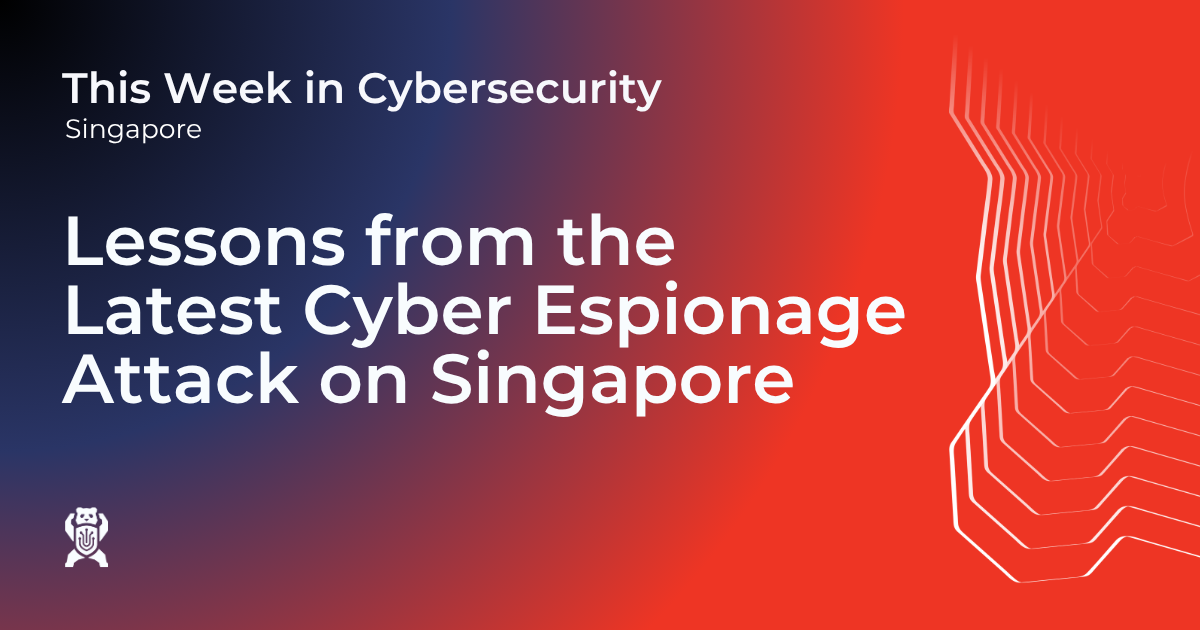A state-linked cyber espionage group, UNC3886, has been confirmed by Singapore’s Coordinating Minister for National Security and Home Affairs to be actively targeting Singapore’s critical information infrastructure (CII) — including energy, telecommunications, finance, transport, and government systems. According to a Straits Times report, this marks an ongoing and silent campaign of intrusion and data theft by an advanced persistent threat (APT) group using zero-day exploits and stealth techniques.
What is UNC3886?
UNC3886 is a state-sponsored cyber espionage group targeting Singapore's critical infrastructure using zero-day exploits and stealth techniques. The group is widely suspected to be linked to Chinese state interests.
This isn’t ransomware. UNC3886 is not financially motivated — their goal is strategic espionage and potential long-term disruption. They seek intelligence access or the ability to manipulate essential services remotely.
For operators of critical infrastructure — from utilities to telcos, transport networks, and financial institutions — this incident is an immediate and serious risk. At Blackpanda, we’re committed to helping these organisations prepare and respond effectively.
Learn more about Blackpanda Incident Response
UNC3886: A Stealthy, High-Value Threat
UNC3886 was first identified by Mandiant in 2022 and is widely regarded as a China-linked APT actor. According to Minister Shanmugam, the group is actively inside Singapore’s CII, quietly harvesting data or positioning itself deeper in the network — potentially months before detection. Their sophisticated toolkit includes zero-day exploits in network infrastructure and virtualisation platforms.
Why CII Operators Must Act Immediately
Imagine waking to the news that UNC3886 had breached your utility or transport network weeks ago — exfiltrating research, mapping system controls, and lurking unseen. Without real-time forensic insight and rapid containment, such intruders can persist and expand their foothold, creating risks of sudden disruption or data leaks.
In attacks on critical infrastructure, even subtle delays can allow adversaries to establish deeper access, hide longer, and inflict greater strategic damage.
What Happens in the First 24 Hours of a Cyber Espionage Breach
Upon detection, urgency is paramount. The essential steps include:
- Immediate isolation of affected systems to prevent lateral movement.
- Forensic analysis to determine the scope, tools, and intent.
- Root cause investigation to identify exploited vulnerabilities.
- Removing backdoors and closing access points to ensure clean containment.
- Planning for remediation and recovery, with support for operational continuity.
Responding without experts who understand APT behaviour can result in missed compromises, hidden persistence mechanisms, and ongoing espionage.
How Blackpanda IR-1 Supports Critical Infrastructure Cybersecurity
Our IR-1 subscription delivers a high-calibre incident response solution that is approximately 10x less than the price of traditional IR retainers, and custom-fit for critical infrastructure:
- 24/7 standby access to elite triage and containment teams.
- Weekly attack surface management (ASM) reports to find and fix vulnerabilities before attackers can exploit them.
- Forensics capable of uncovering long-dormant threats.
- Expert recovery planning tailored to your high-risk environment.
- Access to L3 responders with expertise in deep, strategic intrusion events.
To fit diverse needs, local regulations and compliance requirements, your IR-1 subscription may be upgraded into IR-X, which is a bundle subscription that includes all the benefits of IR-1 plus retainer hours to tap on Blackpanda’s IR consulting services.
Incident Response Readiness: Next Steps for Singapore’s CII Operators
In light of UNC3886’s campaign:
- Conduct an incident response readiness assessment to evaluate current capabilities.
- Activate an always-on incident response retainer to ensure no delays in expert help.
- Run compromise assessments regularly to detect hidden APT activity.
- Strengthen zero-day defenses on network and virtualization systems.
For strategic frameworks, reference the Cyber Security Agency of Singapore’s CII guidelines.
Ready for the Espionage Threat?
UNC3886’s operations in Singapore are an unmistakable warning: this is not exploratory hacking — it’s mission-driven espionage with potential operational impact. Critical infrastructure providers are prime targets.
Protect Your Critical Infrastructure with IR-1
Book Your Free Cyber Readiness Consultation
References
- "Critical infrastructure in S'pore attacked by cyber espionage group: Shanmugam," Straits Times: https://www.straitstimes.com/singapore/critical-infrastructure-in-spore-attacked-by-cyber-espionage-group-shanmugam
- "Who is UNC3886, the group that attacked S'pore's critical information infrastructure?," Straits Times: https://www.straitstimes.com/singapore/who-is-unc3886-the-group-that-attacked-spores-critical-information-infrastructure
- Cyber Security Agency of Singapore: https://www.csa.gov.sg/








